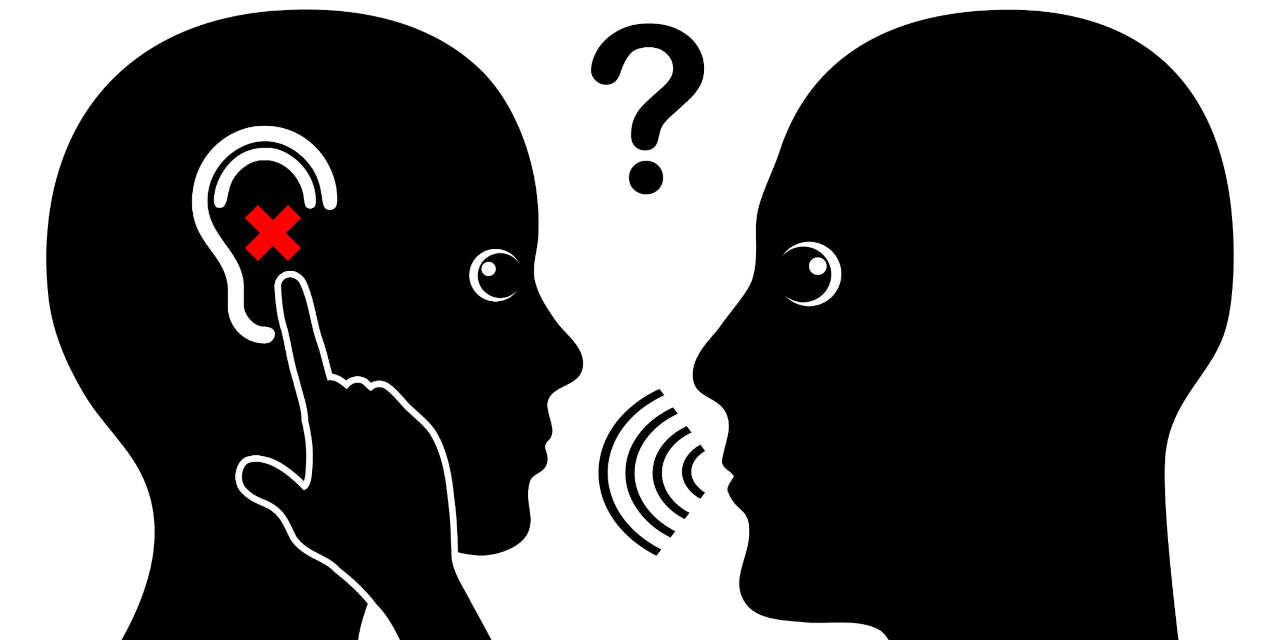By Jack Cumming
Not long ago, Senior Living Foresight published three articles about the impact of hearing loss on the experience of living in a senior living community. Frankly, my own hearing loss prompted the writing of those articles.
Our Amplified Era
Recently, at the Pioneer Network annual conference, I was reminded of how difficult it is to address hearing impairments, even for the most well-intentioned organizations. Most senior living communities, and most conferences, hire audio experts to try to get the sound right. Anyone who’s been to a rock concert knows how central amplification has become to the experience.
At a concert, amplification can be more important than the quality of the musical instruments or even the artistry of the performers. Some seem to imagine that louder is better and that the loudest can mask a lack of talent. Do you remember acoustic guitars? For me, at least, there was a heart and feeling in that era that is lost in the digital age. Have you been to a dance where you had to leave because the band turned up the volume till it hurt?
To get to the point though, the audio experts for conferences and senior living gathering spaces are unlikely to be experts in fashioning amplification to aid those who have lost hearing due to age or a rock concert youth. The fact of the matter is that clarity and discernment are irretrievably diminished with hearing loss. All a hearing aid can do is amplify the sound. It doesn’t help much with clarity.
Echoes
Imagine yourself in a space with lots of echoes and with someone trying to tell you something complicated. It takes all your capacity to focus on them, their voices, and their message. Your focus is helped by delicate hair cells (stereocilia), which are central to sound discernment and clarity.
Now imagine that those crucial cells are damaged. Imagine that the focus of the ear shape itself is null since the microphone for a hearing aid is placed behind the ear. All those competing echoing sound streams arrive undifferentiated, leaving you with nothing but murkiness that obscures the speaker’s message. Wow, that’s a mess.
Acoustics
You may be thinking that most meeting halls and auditoriums are specifically designed to avoid echoes. Avery Fisher Hall, the home of the New York Philharmonic, gained its name because Avery Fisher funded fixing the acoustics after the original hall was found to be inadequate. Even a vaulted space can be hung with fabric banners to reduce echoing.
The simple fact is that sound waves move very slowly compared with visual clues. In a large space, that acoustical reality can make the sound seem out of sync with the speaker. We lose the hearing clues delivered by the natural cupping of our ears and vision when we focus on the speaker. That dissonance manifests itself as message-destroying murkiness unless we are exceptionally adept at compensating. Those with hearing loss and behind-the-ear hearing aids can’t make those compensating adjustments with their brains, especially if that brain is already challenged by age.
Destructive Echoes
While I don’t think that the senior living community where I live is unique, I perceive that the audio experts brought in to engineer the main meeting room weren’t thinking of old people with impaired hearing. This is a general problem in senior living communities, so no one community should be singled out. It’s just the one I know best.
That meeting room is beautiful. The vaulted ceiling is an artifact of local historic preservation requirements. The senior living community replaced a historic hotel on the site. For the hearing impaired, though, that lovely ceiling creates hearing-destructive echoes. Banners or flags, which can be relevant to residents, might enhance the sound.
Not only does the room echo, but the placement of the speakers by audio experts retained by management creates additional artificial echoes. The speakers are set in the four corners of the room. Consequently, the sound reaches listeners out of sync. It echoes. Moreover, because it doesn’t come from the speaker directly, the comprehension benefit of focusing attention on the speaker is also impaired.
Embracing the Challenge
Many years ago, I was a member of the Riverside Church in the city of New York. Now that’s a challenging space if the aim is listener understanding. Loudspeakers were set on the columns sequentially from the pulpit to the narthex at the back. The loudspeakers directed sound toward the narthex.
What was remarkable, though, was that the loudspeakers were electronically calibrated so that sound was delayed to match the time lag for sound from the pulpit. It worked. Clarity was no problem.
A Caring Leader
Now we come to the Pioneer Network conference. For the opening session, I sat up front between loudspeakers at the podium and loudspeakers on the side of the room. I couldn’t understand what the speakers were saying. I stayed in the room out of politeness, but the wisdom from the podium was lost.
Later, in a moment of serendipity, I ran into Penny Cook, Pioneer’s magnanimous CEO, and she asked how the event was going. I told her of my predicament. She was surprised because Pioneer uses experts to set up the system, but she cared, and that felt good.
Her caring led me to search online for “audio engineering for the hearing impaired.” Unless you’re shopping for a hearing aid, don’t bother repeating that search.
Click here for the “confessions” of an audio mixer who sheepishly admits that hearing impairment is a growing malady.









This was well written and clearly explained. How long will it take people to make the necessary changes so everyone can enjoy common spaces?